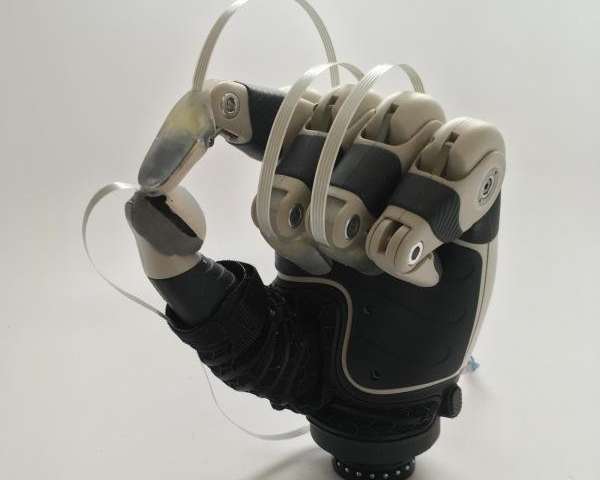
Imagine if your hand were asleep. All the time. That uncomfortable feeling of disembodiment is what amputees with prosthetic hands experience 24/7 — but soon, prosthetic fingertips may be able to feel.
That's what Dr. Jacob Segil from the Rocky Mountain Regional VA Medical Center has been working to develop along with a team of engineers from across the country and funding from the VA and CU Boulder.
"This latest effort on sensory restoration is going to make a huge difference in our field," Segil said. "Previously, the majority of the work in our field had to do with replacing the physical systems — mechanically building different devices and control systems ... What we lost sight of in a lot of ways was that the sensory feedback, the integration of the limb into the body is horribly critical."
As a VA Research Healthcare Scientist, Segil's research in upper limb prosthetic design has been well-funded by the VA because of the importance of the research for veterans. In recent years, Segil acted as the bridge between various parties developing different technologies that could all work together to achieve the goal of fingertip sensors.
"I was the bridge. I connected all these parties together to develop technologies specific for veterans with amputation," Segil said. Those different parties include Dustin Tyler from the Cleveland VA Medical Center and Nikolaus Correll from CU Boulder.
"The best example I can think of is when your arm falls asleep," Segil said. "You wake up and your arm is in a funny position and it's numb. You have to look around and try to find your arm and shake it awake. We refer to that sensation as disembodiment. That arm is somehow not a part of you anymore, and it's technically what we give amputees all the time — a disembodied tool that they're using as a prosthesis."
"I think one of the best ways we can help veterans and amputees in the future is to enable the embodiment of the device back into their body's schema," Segil added.
So what does this research really look like?
"Nerves are electrical. So how do you electrocute them so that the signals, when they reach the brain, feel like touch as opposed to tingling or spiking or pain? What we built was a fingertip sensor that can be installed on prosthetic hands ... it's an implanted device where the amputees have undergone surgery so that we can talk to the nerves," Segil said.
"And we have remarkable volunteers," Segil added. "They undergo surgery, and then they volunteer their time in Dr. Tyler's lab to run these experiments. They literally have wires sticking out of their arms and we literally plugin. That's the connection between the machine, the robot, the prosthetic, and the body — basically a bunch of electrical wires that take measurements from the fingertips and create sensations in the brain."
The technology is still developing, and any device as invasive as one implanted in the body develops slowly. But the fingertip sensors designed by Segil and the rest of the team are already undergoing an FDA investigational device exemption review.
"In terms of timeline, nothing moves quickly — especially at this level of invasiveness. But they've been working on it for twenty years and it's been implanted into four people," Segil said.
